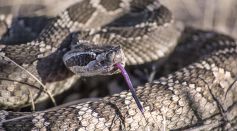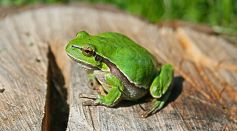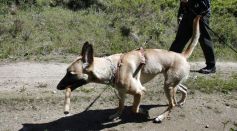ENVIRONMENT & CLIMATE

Fossilized Ancient Human Feces With Parasites Reveals the Diet of Stonehenge Builders
5-Foot Black Melanistic Alligator Gar Caught by 2 Anglers in Texas [See Photos]

Moth Species Not Seen in the US for 100 Years Found in Filipino Passenger's Luggage in Detroit Airport

Rattlesnake vs. Gopher Snake: How to Tell the Difference Between the 2 Snakes?

Why Do Frogs Mate With Food, Another Animal Species, or An Object? Here’s What Biology Tells Us

Whale Shark Populations Mysteriously Decline, Here’s Why According to Study

Crocodile Father Gives 100 Hatchlings a Piggyback Ride While Basking in Chambal River; Intimate Bonding with Baby Crocs Captured in a Stunning Photos

Belgian Malinois Defends Master After a Mountain Lion Attacks Northern California Hiker; Puma Leaves Dog and Owner Injured

First-Ever Clue of Denisovan Species in Southeast Asia Unearthed in Laos Showing Ancient Humans Lived in the Region 130,000 Years Ago

Elon Musk Does Not Want Humanity to End Up in Adult Diapers, Encourages People to At Least Maintain the Population

S&P 500 ESG Index Drops Tesla Due to Lack of Low-Carbon Strategy and More; Elon Musk Reacts Calling Metrics a 'Scam'
Cambodia Ministry Warns Against Picking Carnivorous Penis Plant Flowers for Blogs; Pitcher Plants Already Vulnerable to Extinction

Two Unknown Dolphin Species Discovered in Prehistoric Switzerland

Giant Whale Nearly Killed 4 Boat Passengers After Breaching; Tourists May Have Provoked the Incident, Made the Mammal Felt Harassed
Most Popular

Largest Known Volcanic Aquifer Discovered Beneath Oregon's Cascades

New 'Supergiant' Sea Bug Found in South China Sea, Named After Darth Vader

Mediterranean Sea Was Refilled by a Catastrophic Flood Millions of Years Ago

Mysterious Cosmic Waves That Sound Like Birds Detected in Unexpected Space Region





